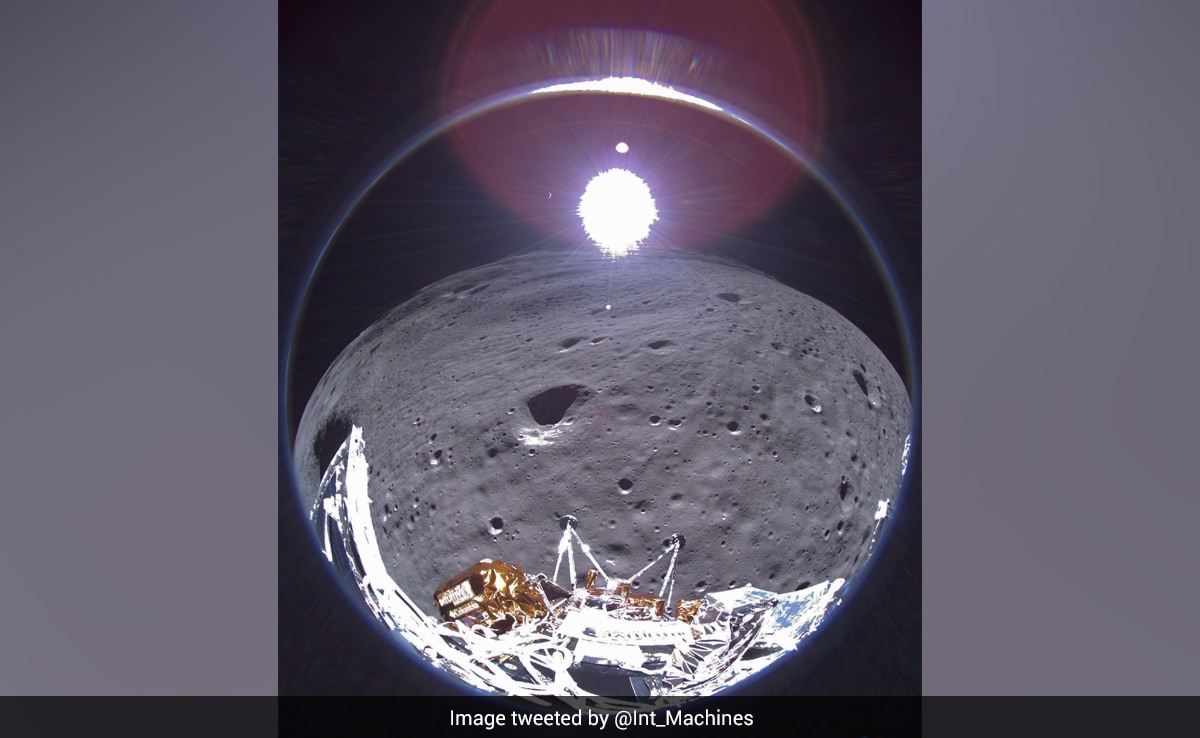
The historic mission has been hailed as a success by Intuitive Machines and NASA.
Odysseus, the first U.S. spacecraft to land on the moon since 1972, was “put to sleep” after the lunar night kicked in. But while the mission that saw the first ever Moon landing by a private company is coming to an end, Intuitive Machines CEO Steve Altemus told reporters that there are hopes to “wake it up” in about three weeks, when the Sun is out again.
The historic mission has been hailed as a success by Intuitive Machines and NASA, even as it ran into multiple problems along the way, including a landing that saw the uncrewed probe tip over upon reaching the surface.
However, before the two-week lunar night enveloped Odysseus’ moon lander, the robotic craft sent back one final transmission from space. It depicts the cratered grey surface that extends to the lunar horizon. If one looks closely, you can see a crescent of shadowed Earth in the distance.
Before its power was depleted, Odysseus completed a fitting farewell transmission. Received today, this image from February 22nd showcases the crescent Earth in the backdrop, a subtle reminder of humanity’s presence in the universe.
Goodnight, Odie. We hope to hear from you… pic.twitter.com/RwOWsH1TSz
— Intuitive Machines (@Int_Machines) February 29, 2024
“Before its power was depleted, Odysseus completed a fitting farewell transmission,” Intuitive Machines wrote on X. They added, “Received today, this image from February 22nd showcases the crescent Earth in the backdrop, a subtle reminder of humanity’s presence in the universe. Goodnight, Odie. We hope to hear from you again.”
Meanwhile, Intuitive Machines CEO told reporters at NASA’s Kennedy Space Center, on February 29, “What we’ve gotten in terms of data on the vehicle is a tremendous amount of the guidance, navigation control data, all the propulsion data, all the performance data for the vehicle that will allow us to completely reconstruct the mission.”
“What we’re going to do is kind of tuck Ody in for the cold night of the moon, and see if we can’t wake him up here when we get the solar noon,” in about three weeks, he said.
Intuitive Machines officials weren’t sure if the batteries, after going through the ensuing plunging nighttime temperatures, would be able to pass on the power generated by the probe’s solar panels, but “why not try?” asked Mr Altemus.
NASA is planning to return astronauts to the Moon later this decade, and paid Intuitive Machines around $120 million for the mission, as part of an initiative to delegate cargo missions to the private sector and stimulate a lunar economy.
Odysseus carries a suite of NASA instruments designed to improve scientific understanding of the lunar south pole, where the space agency plans to send astronauts under its Artemis program later this decade.




